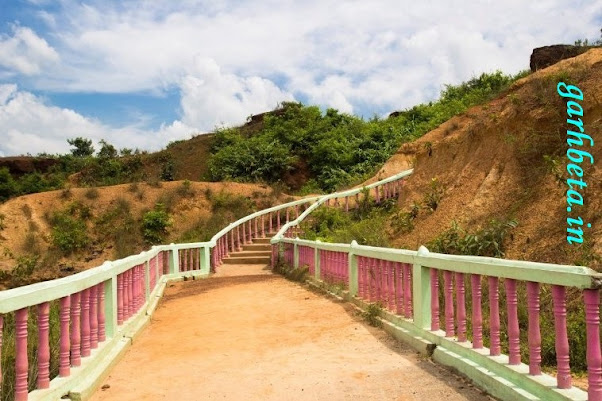"Gangani - The Grand Canyon of Bengal, অপরূপা গনগনি"
Gangani (The Grand Canyon of Bengal), Garhbeta - One of the most famous spot of Garhbeta is "Gangani". Its a Natural Hill spot in the river bank, and also a very popular picnic spot,In bygone days Garbeta was prosperous settlement and town. Once it was under Bagri Pargana, Bagri is derived from Bakdihi.
In ancient texts, Bakdihi is mentioned as ‘Bakdweep’. Garbeta or Bagri has a keen relationship with the episode of Bak-rakshas (Bak, the demon) which is narrated in the Mahabharata.
Gangani Gallery
[envira-gallery id="304"]
See the high-Height Drone Video_Segment
Either it’s nothing or it’s something more than extraordinary. That’s what I was thinking as I stood mesmerised on the field overlooking the colossal ruins of Gangani. It’s nature’s creation at its best. If you haven’t been to the US ever and want to see The Grand Canyon in miniature form, visit this place, at Garbeta in West Midnapore.
See the Video Segment-1
With
the Shilabati river flowing through a 70ft-deep gorge and the adjoining
places taking the form of different shapes and figures because of
erosion, it’s a treat to the eye. The formations on the wall of the
gorge spreading from east to west are something similar to the
archaeological sculptures of Ajanta and Ellora but the only difference
is that the ones at Gangani were not created by human hand.
There was
a pagoda-shaped formation that caught my attention even from a
distance. Unless known beforehand one would never be able to identify
that it was an effect of erosion on rocks, not a manmade shrine! It’s
really astonishing how effortlessly nature can make such creations.
See the Video Segment-2
After
taking a bird’s-eye view of the area for some time, I decided to get a
closer look. The steps carved into the side of the hill made of red
laterite soil took me down.As I moved slowly on the grassy field,various
structures and sights came into view.
All the structures, namely fort, lion, ship, pillar and more, appeared very much alive.
When
I stood below the fort, I got the feeling that the guards from the
pillars were shouting at me, forbidding me to move ahead. The lion
sitting on the top of the wall seemed to be guarding the main gate of a
palace.
As I was walking through the ruins, I felt as if I was transported to a historic age in a time machine.
I went in front of the pagoda-like structure seen from the top and even a critical look up close could not disperse my feelings that it was not a real pagoda but a natural lookalike.
See the Video Segment-3
After
wandering for some time we sat on the bank of Shilabati, which was
running almost dry. We saw some local people catching fish in the
knee-deep water.
Afternoon had already passed and evening was
approaching fast. The red colour of the walls of the gorge was further
deepened by the rays of the setting sun. The whole place seemed to be on
fire.
Slowly the light died and soon an absolute darkness engulfed the place. We sat there wondering whether any modern laser show could match the lighting effect of nature we just witnessed.
Besides the field of Gangani, there are some other places like the Sarbamangala Mandir and Radhaballav Mandir,Krishna Rai Jiu at Bagri Krisnanagar that you can visit in Garbeta. History and myths are attached with all of them.
Silabati River
The Silabati River (also known as Silai) originates in the terrain of the Chhota Nagpur Plateau in the Purulia district of the state of West Bengal in eastern India. It flows in an almost southeasterly direction through the districts of Bankura and West Midnapore.
The Silabati joins the Dwarakeswar near Ghatal and afterwards is known as Rupnarayan.
It finally joins the Hooghly River, which empties into the Bay of Bengal.
Almost
every year the Silabati causes flooding, particularly in Banka, Khirpai
and Ghatal area. There is a small reservoir on the Silabati
near Khatra known as kadam dewli dam where a canal
from Mukutmanipur Kangsabati dam meets.
Gangani Grand Canyon of Bengal
[/su_box]


















No comments:
Post a Comment